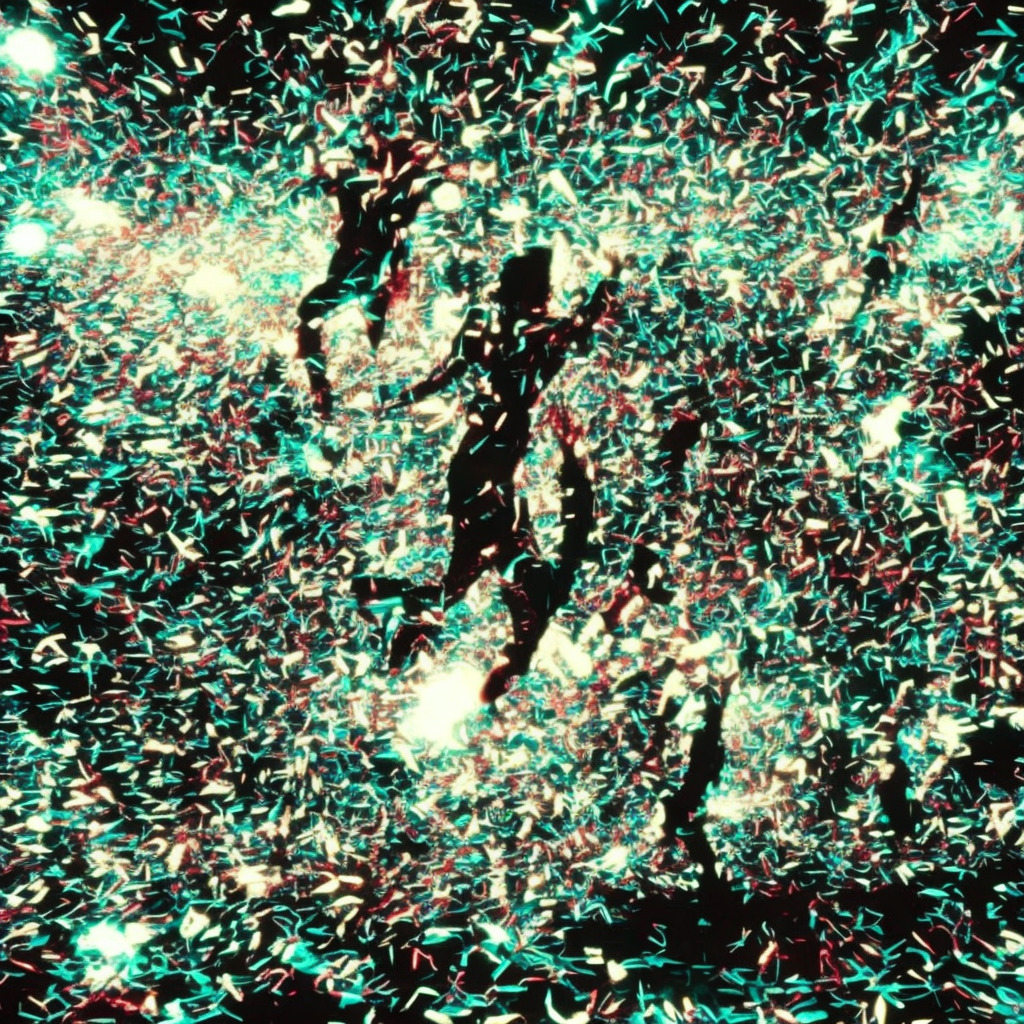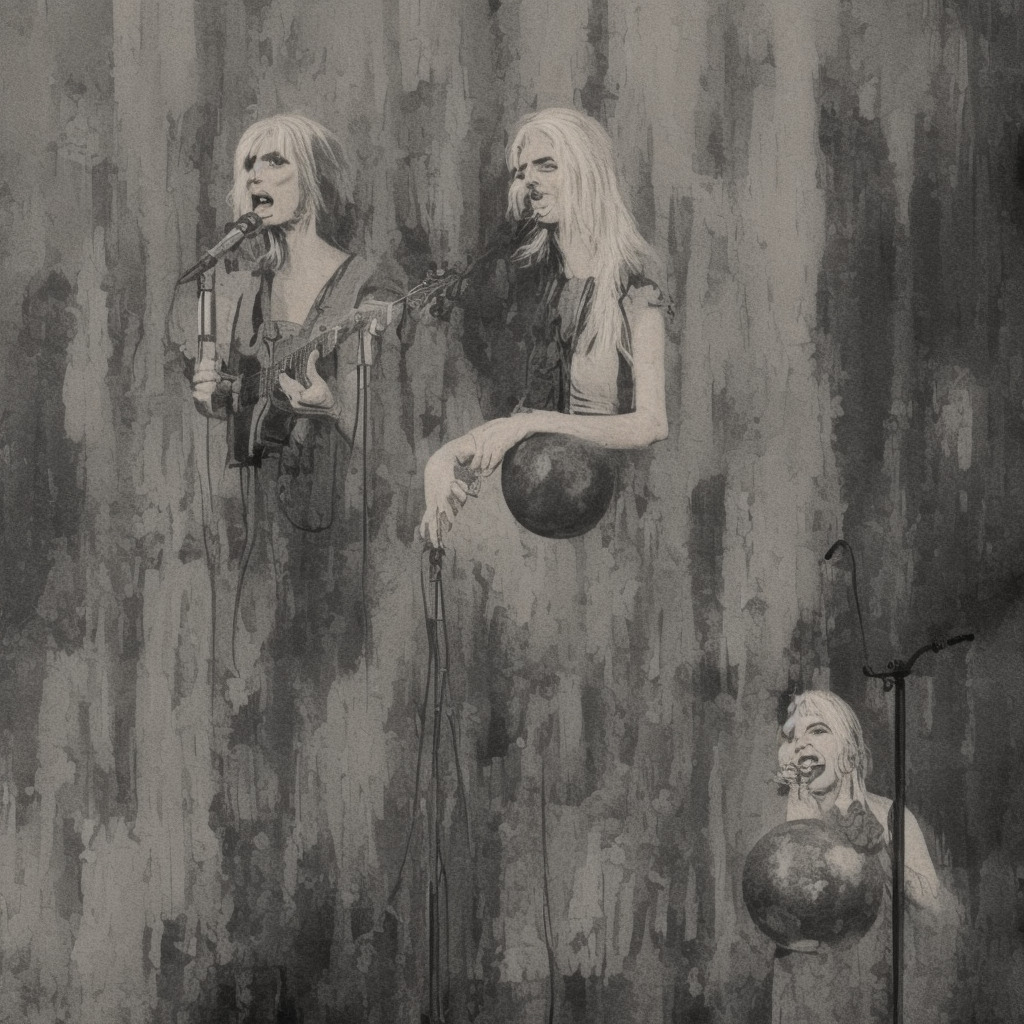🤘Did you know? Dream Theater’s epic 22-min masterpiece “Illumination Theory” was inspired by the human quest for understanding!🧠 Dive into the musical journey of transcendence with #DreamTheater’s magnum opus! 🎸🎹 #IlluminationTheory #ProgRockTrivia #NowPlaying Read about it: tinyurl.com/2p94y775
Finding the Light in Darkness: Dream Theater’s Magnum Opus
Dream Theater’s 22-minute epic, “Illumination Theory,” exemplifies their unyielding innovation and virtuosity, taking listeners on an emotion-filled, progressive metal odyssey.

Dream Theater, a name synonymous with progressive metal, has consistently pushed the boundaries of musical prowess since their inception in 1985. Originally formed by guitarist John Petrucci, drummer Mike Portnoy, and bassist John Myung, they have released a total of 15 studio albums throughout their career, earning multiple accolades and awards in the process.
Their lineup consists of John Petrucci on guitar, John Myung on bass, James LaBrie on vocals, Jordan Rudess on keyboards, and Mike Mangini on drums, who replaced founding drummer Mike Portnoy in 2010. Together, they have solidified their place in the annals of metal history as a band not afraid to experiment, evolve, and challenge themselves and their fans with each new release.
One such endeavor is the sprawling 22-minute epic, “Illumination Theory,” the closing track on their 2013 album, “Dream Theater.” The song is a musical journey that showcases the band’s technical virtuosity, emotional depth, and melodic sensibilities. It is a powerful testament to the band’s ability to maintain a high level of musicianship even after more than three decades in the business.
“Illumination Theory” is a five-part suite that explores themes of darkness, loss, and ultimately, redemption. It features soaring melodies and intricate instrumentals, taking listeners on a rollercoaster of emotions. The keyboard work of Jordan Rudess in particular shines through, adding a cinematic quality to the composition. This song represents Dream Theater’s penchant for pushing the envelope, creating music that is as thought-provoking as it is technically impressive.
Critics, however, have occasionally cited the band’s dense and complex compositions as a potential barrier to entry for more casual listeners. Despite this, Dream Theater’s dedicated fanbase continues to embrace their ambitious musical endeavors wholeheartedly.
Throughout their career, Dream Theater has been nominated for and won several awards, including the Metal Storm Awards for Best Progressive Metal Album and Best Progressive Metal Song, along with multiple nominations for the Classic Rock Roll of Honour Awards. Their work on “Illumination Theory” and the eponymous album has received high praise from both fans and critics alike, further solidifying their status as one of the most influential and respected bands in progressive metal.
In conclusion, Dream Theater’s “Illumination Theory” is a prime example of the band’s undeniable talent and their relentless pursuit of musical innovation. While some might find their intricate compositions overwhelming, their dedication to pushing the boundaries of progressive metal is an inspiration to both aspiring musicians and seasoned professionals alike.
Charting the Journey of a Progressive Masterpiece
Defying chart norms, Dream Theater’s “Illumination Theory” captivates with its symphonic mastery, cementing its legacy as a modern progressive classic.

Released on September 24, 2013 as part of Dream Theater’s self-titled twelfth studio album, “Illumination Theory” quickly became a fan favorite thanks to its intricate melodies and symphonic arrangements. The 22-minute long track, divided into five parts, showcases the band’s signature progressive metal sound and musical prowess.
Though the entire album, “Dream Theater,” debuted at No. 7 on the Billboard 200 charts, “Illumination Theory” individually did not make a significant impact on the charts. This was primarily due to the fact that the song’s length and complexity were not conducive to mainstream radio play. However, the track’s ingenuity and captivating composition resonated deeply with the band’s loyal fanbase and critics alike.
Despite the lack of chart success for “Illumination Theory” specifically, the album as a whole garnered positive reviews and reinforced Dream Theater’s position as one of the premier progressive metal bands in the music industry. The album managed to peak at No. 1 on the US Top Hard Rock Albums chart and No. 2 on the US Top Rock Albums chart. Internationally, the album reached the top 10 in several countries, including No. 3 in Germany, No. 4 in the Netherlands, and No. 6 in the United Kingdom.
While “Illumination Theory” may not have skyrocketed up the charts as a single, there is no denying the significant impact it has had on both the band’s discography and the progressive metal genre itself. The track’s mesmerizing blend of instrumental virtuosity and evocative melodies has undoubtedly solidified its place as a modern progressive classic.
As we continue to explore the vast landscape of Dream Theater’s extensive body of work, it’s important to recognize that chart success is not always indicative of a song’s quality or influence. And in the case of “Illumination Theory,” it’s clear that this epic composition has left an indelible mark on the hearts and minds of Dream Theater fans and music enthusiasts all around the globe.
Delving into the Lyrical Depths
As we explore the profound lyrics of Dream Theater’s “Illumination Theory,” we are left contemplating the essence of life and the pursuit of knowledge.
To really feel the joy in life
You must suffer through the pain
When you surrender to the light
You can face the darkest days
If you open up your eyes
And you put your trust in love
On those cold and endless nights
You will never be alone
Passion glows within your heart
Like a furnace burning bright
Until you struggle through the dark
You will never know the joy in life
The spirit transcends the void
To bring you home
The lyrics of “Illumination Theory” delve into the duality of life by emphasizing the importance of embracing both the joy and the pain. This theme is particularly pertinent as the song was released in 2013 on the band’s eponymous album, “Dream Theater.” The era was characterized by a growing global awareness of deep-rooted issues, including climate change, social inequality, and political turmoil. As a result, the message embedded within the song’s lyrics resonates deeply with the spirit of the time.
The meaning behind the lyrics pushes the listener to face the darkest days and trust in love to guide them through. The song encourages the pursuit of knowledge and enlightenment as a means of transcending the trials and tribulations that life has to offer. The metaphor of passion, symbolized by a furnace burning bright, conveys the message that the human spirit, with all its zeal and energy, can overcome any adversity.
The lyrics of “Illumination Theory” offer both solace and motivation, reminding us that we are never alone in our struggles, and that the path to understanding and enlightenment is often paved with hardships. In doing so, Dream Theater masterfully reflects the essence of the human experience and the spirit of the era in which this compelling song was written.
A Visual Ode to “Illumination Theory”
“Dream Theater’s epic ‘Illumination Theory’ sparks a creative firestorm among dedicated fans, who craft visually stunning tributes that showcase the song’s enduring inspiration and the immense talent within their community.”
Although Dream Theater’s “Illumination Theory,” the epic closing track from their self-titled album, never received an official music video treatment, the band’s passionate fan base has stepped up to the challenge. Many dedicated fans have created their own videos and visual tributes to accompany the 22-minute musical odyssey, interpreting the song’s multiple sections and themes through different creative lenses.
One notable fan-made video is a live montage created by YouTube user Marcos Prósperi, who meticulously compiled various concert footage of Dream Theater performing “Illumination Theory” from their “Along for the Ride” and “The Astonishing” tours. The synchronized video showcases the band’s impeccable live musicianship and captures the energy and atmosphere that comes with experiencing Dream Theater in concert.
Another imaginative fan-made video by YouTube user Tavares Iuri is a lyric video that takes the viewer on a journey through the song’s complex structure and powerful lyrics. The video’s creator skillfully matches the visual style to the song’s mood, using different fonts, colors, and animations to reflect the dynamic shifts in the music. The result is a captivating and immersive experience that enhances the listener’s connection with the song’s message.
In addition to fan-made videos, several YouTube musicians and cover artists have paid tribute to “Illumination Theory” by recording their own interpretations of the song, further demonstrating the impact that this composition has on its listeners. Some of these renditions include impressive guitar solos, keyboard performances, and even full-band covers that display the immense talent and dedication found within the Dream Theater community.
While an official music video for “Illumination Theory” may be missing from Dream Theater’s videography, the band’s loyal fan base has ensured that the song’s visual legacy lives on through their creative projects and heartfelt tributes. These fan-made videos and covers not only showcase the diverse skills and talents of the Dream Theater community but also serve as a testament to the enduring inspiration provided by this monumental piece of music.
The Mastermind Behind the Musical Marvel
The composer of “Illumination Theory,” John Petrucci, is a renowned musician and a founding member of the progressive metal band Dream Theater. With his exceptional prowess on the guitar, Petrucci has been an influential figure in the world of progressive rock and metal for over three decades. Besides “Illumination Theory,” Petrucci has composed numerous masterpieces that have left an indelible mark in the minds of music enthusiasts. One such notable composition is “Metropolis Pt. 1: The Miracle and the Sleeper,” a song that showcases Petrucci’s intricate guitar work and lays the groundwork for the concept album “Metropolis Pt. 2: Scenes from a Memory.” Another remarkable piece is “The Spirit Carries On,” an emotive ballad that highlights the composer’s ability to create a soulful and heartfelt melody. John Petrucci’s contributions to the musical landscape have undeniably enriched the ever-evolving tapestry of progressive metal.
Accolades, Appearances, and Adaptations
“Illumination Theory” – a progressive rock gem hailed for its intricate composition, showcasing Dream Theater’s mastery and inspiring countless adaptations.

Despite its complexity and length, “Illumination Theory” has managed to garner significant attention from both fans and critics of progressive rock alike. The song has been hailed as a masterpiece of composition, with many praising its intricate arrangements and Dream Theater’s phenomenal musicianship. Although it has not officially won any awards, it has consistently appeared in various “Top Prog Rock Songs” and “Best Dream Theater Tracks” lists, further cementing its status as a progressive rock gem.
While “Illumination Theory” has yet to make its way into the world of movies, television, or video games, its grandiose nature certainly makes it a prime candidate for a cinematic or gaming score. Its sweeping soundscapes, powerful choruses, and intricate melodies would be an excellent accompaniment to an epic science fiction, action, or fantasy project. One can only imagine the impact it would have if it were featured in such media in the future.
As for cover versions, the sheer complexity of “Illumination Theory” has made it a challenging piece for artists to tackle. However, that hasn’t stopped ambitious musicians from attempting to pay tribute to this remarkable track. Various interpretations of the song can be found on platforms like YouTube, with artists covering everything from full-band renditions to stripped-down solo piano performances. These covers highlight the versatility and timelessness of the song, as it manages to retain its core essence in a variety of styles and arrangements.
In the world of progressive rock, “Illumination Theory” remains a shining example of Dream Theater’s ability to push the boundaries of their genre while creating an unforgettable listening experience. Its presence in lists acknowledging the best of prog rock, its potential soundtrack capabilities, and the countless cover adaptations only serve to emphasize the undeniable and enduring impact of this iconic track.
Breaking Down the Sonic Landscape
Diving into the musical structure of “Illumination Theory,” it’s evident that Dream Theater crafted a masterpiece that showcases their exceptional musicianship and intricate compositional skills. The epic 22-minute song is divided into five distinct sections, which seamlessly flow from one to another. The band’s signature blend of progressive metal, rock, and classical influences is evident throughout the piece, creating a rich and varied sonic landscape.
The song kicks off in the key of E minor, with a powerful guitar riff and pounding drums that set the stage for an intense musical journey. The tempo varies throughout the piece, ranging from a slow and introspective 60 beats per minute (BPM) during the more reflective sections to a frenetic 160 BPM during the heavier, more aggressive moments. The time signature is predominantly in 4/4, but there are a few instances where the band ventures into more complex time signatures such as 7/8 and 5/4, showcasing their progressive mindset.
“Illumination Theory” features a diverse range of chord structures, with the band expertly weaving between minor and major keys, as well as incorporating various modes and scales. For instance, in the third section titled “The Embracing Circle,” Dream Theater employs the Lydian mode, which is characterized by its augmented fourth degree, giving the section a distinct and ethereal quality. This contrasts with the heavier sections of the song, which often employ power chords and palm-muted, syncopated riffs.
The instrumentation throughout the song is nothing short of impressive, with each member of the band shining in their respective roles. John Petrucci delivers an array of jaw-dropping guitar solos, while Jordan Rudess showcases his keyboard wizardry with a mix of atmospheric pads, intricate piano lines, and blistering synth solos. John Myung’s bass work is equally stellar, providing a solid foundation for the song and occasionally stepping into the spotlight with melodic and technical basslines. Mike Mangini’s drumming is both powerful and nuanced, driving the song forward with precision and flare.
Perhaps one of the most striking aspects of “Illumination Theory” is the inclusion of a string ensemble, which adds an extra layer of depth and grandeur to the song. The strings are particularly prominent in the second section, “Live, Die, Kill,” as well as the beautiful and somewhat haunting instrumental interlude “The Pursuit of Truth.” The arrangement of the string ensemble is expertly executed, intertwining with the band’s performance and elevating the song to new heights.
In conclusion, “Illumination Theory” is a prime example of Dream Theater’s ability to push the boundaries of progressive music while remaining accessible and engaging. The song’s intricate musical structure, diverse chord progressions, and masterful instrumentation create a dynamic and immersive listening experience that is sure to captivate fans and newcomers alike.







